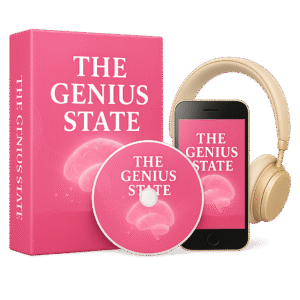Introduction
Your brain is the command center of your life. It controls your thoughts, emotions, decisions, and success. But most people never learn how to train it. A neuroscience based brain training method is changing that. It helps you improve focus, memory, and performance using proven scientific techniques.
This article explains how neuroscience based brain training works, what methods are most effective, and how you can apply them to your daily life for real improvement.
Table of Contents
What Is a Neuroscience Based Brain Training Method?
Neuroscience based brain training is a system that uses scientific knowledge of how the brain works to enhance mental performance. It focuses on rewiring neural connections to help you think faster, learn better, and stay calm under pressure.
These methods are designed to activate neuroplasticity, the brain’s ability to form new connections. When you practice specific exercises repeatedly, your brain physically changes, making it easier to focus, remember, and solve problems.
How Brain Training Works Scientifically
The science behind brain training lies in three key processes:
- Neuroplasticity – Your brain can change its structure through repetition and practice.
- Synaptic Strengthening – Every time you learn something, neurons form stronger connections.
- Brainwave Regulation – Audio and focus techniques can guide your brain into optimal states for creativity and learning.
When used together, these techniques help you reach a high-performance mental state.
Common Neuroscience Based Training Techniques
Here are the most effective brain training techniques supported by neuroscience:
1. Cognitive Exercises
Simple mental tasks like memory recall, problem-solving puzzles, and logical challenges stimulate brain growth and flexibility.
2. Audio-Based Brainwave Training
Sound frequencies can help align your brainwaves into focus or relaxation modes. Programs like The Genius State use this technique to improve mental clarity.
3. Meditation and Mindfulness
These practices calm the mind and build attention control, enhancing gray matter density in brain regions linked to focus and emotion regulation.
4. Neurofeedback Training
This method uses sensors to monitor your brain activity, giving you real-time feedback to train better control over focus and mood.
5. Physical Exercise
Aerobic activity boosts blood flow and oxygen to the brain, improving overall function and memory retention.
Proven Benefits of Brain Training
Research and real-life experience show that consistent neuroscience-based training offers measurable results:
- Sharper Focus: Easier attention control and reduced mental distractions.
- Stronger Memory: Better recall for names, numbers, and new information.
- Faster Learning: Quicker understanding of new skills or subjects.
- Reduced Stress: Lower cortisol levels and better emotional stability.
- Enhanced Creativity: Improved problem-solving and idea generation.
- Increased Mental Energy: Sustained performance without burnout.
The Role of Audio and Frequency Training
Modern brain training includes audio frequency methods that use sound patterns to influence brain activity.
- Alpha waves are linked to relaxation and creativity.
- Beta waves boost focus and logical thinking.
- Theta waves help with deep learning and visualization.
By listening to guided audio sessions, your brain can enter these states naturally. This method is safe, drug-free, and effective for both students and professionals.
How to Start Brain Training at Home
You can begin neuroscience-based brain training today with simple daily habits.
- Set a Consistent Schedule
Train your brain for 20–30 minutes each day. Consistency is key. - Use Guided Audio Sessions
Programs like The Genius State or similar brainwave tools can help you reach optimal mental states. - Practice Focused Learning
Read, solve puzzles, or learn new skills without distractions. - Exercise Regularly
Physical movement enhances brain oxygenation and mental sharpness. - Sleep Properly
Memory consolidation happens during deep sleep. Never skip rest. - Feed Your Brain
Eat foods rich in omega-3, magnesium, and antioxidants for better brain health.
Real-Life Results from Brain Training
People who practice neuroscience-based methods report powerful improvements:
- Students retain lessons longer and perform better on exams.
- Entrepreneurs make clearer decisions under pressure.
- Professionals report faster problem-solving and less burnout.
- Older adults maintain sharper memory and confidence.
These outcomes happen because training reshapes brain pathways responsible for attention, learning, and emotional balance.
Why Neuroscience-Based Methods Are Better Than Traditional Self-Help
Many self-help methods rely on motivation or willpower alone. Neuroscience-based systems, however, use measurable techniques that align with how your brain functions.
- They are evidence-based.
- They deliver long-term change, not temporary motivation.
- They help create new habits at a neural level.
Tools and Programs to Explore
If you are serious about brain improvement, these options can help you start:
- The Genius State – Audio-based brain training focused on creativity and focus.
- Lumosity – Cognitive exercise app for daily practice.
- Muse Headband – Neurofeedback device that measures focus and relaxation.
- BrainHQ – Online brain training based on neuroscience research.
Tips to Maximize Brain Training Results
- Train daily at the same time to build routine.
- Keep sessions short but focused.
- Avoid multitasking during practice.
- Track your progress weekly.
- Combine audio training with mindfulness or exercise.
Common Mistakes to Avoid
- Skipping sessions or practicing inconsistently.
- Expecting instant results without repetition.
- Overtraining and not resting the brain.
- Ignoring nutrition and sleep.
Final Thoughts
A neuroscience-based brain training method is not just a trend, it is a science-backed approach to unlocking your full mental potential. It helps you improve memory, focus, creativity, and emotional control naturally.
You do not need drugs or endless motivation. You only need consistent practice and the right tools.
Start small, stay consistent, and your brain will respond. With dedication, you can train your mind to perform at its peak every day.


